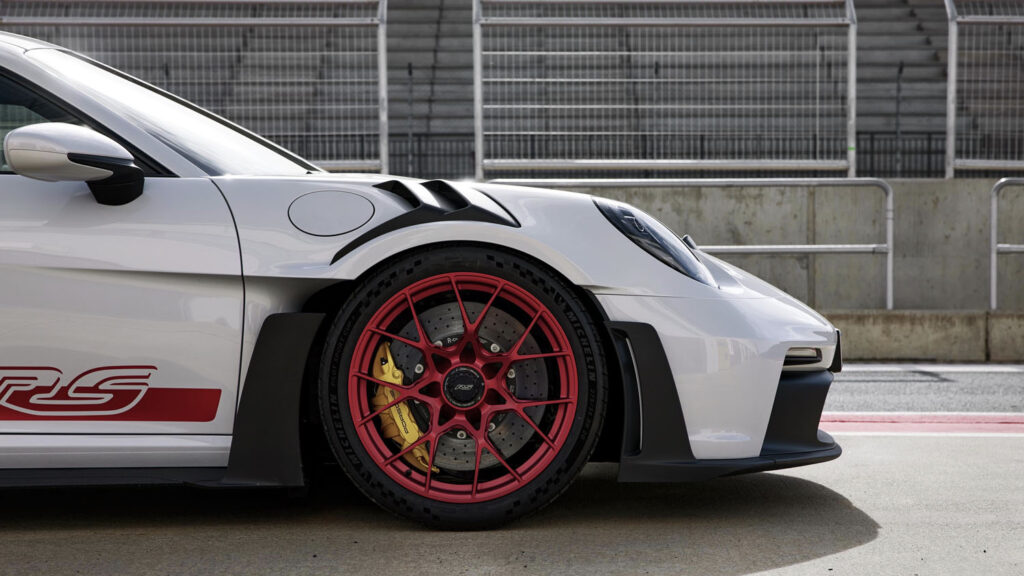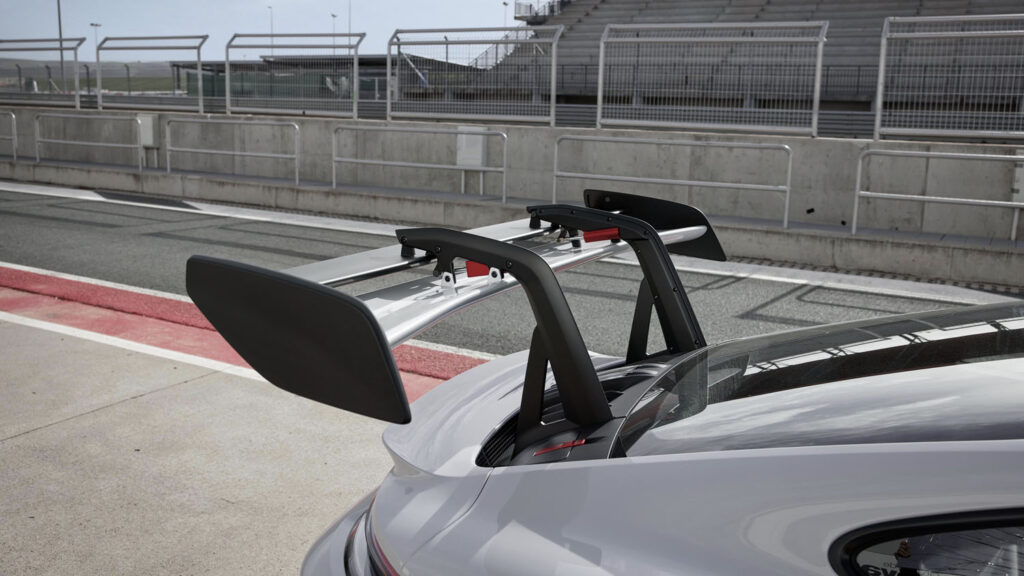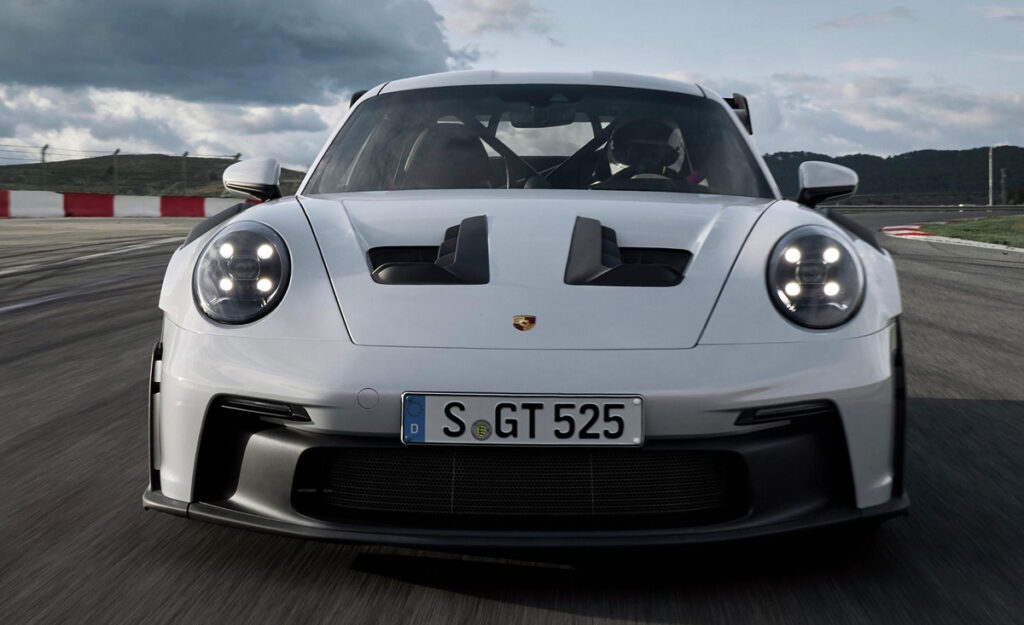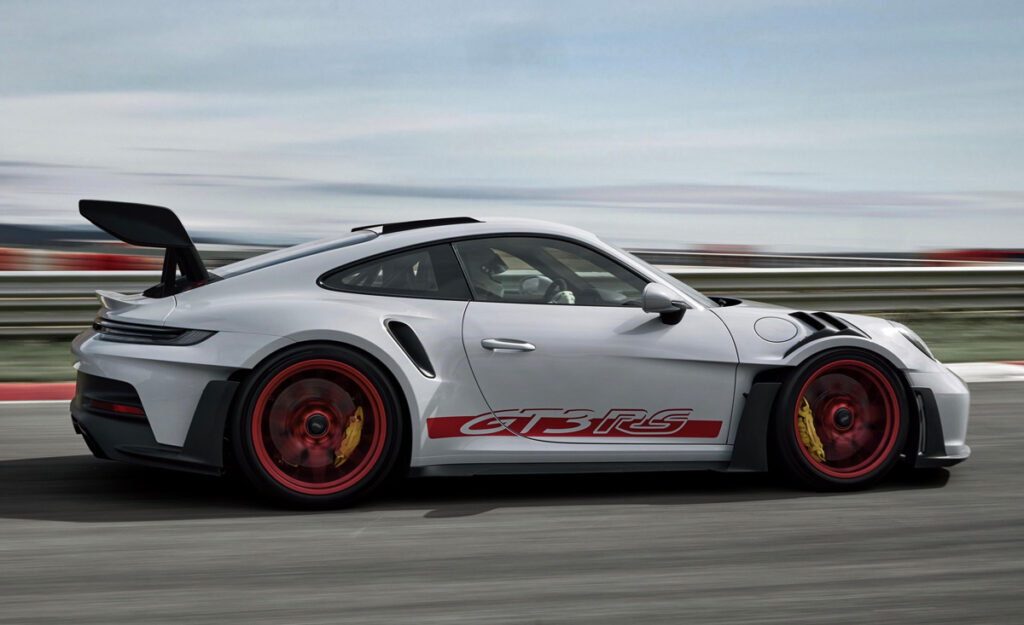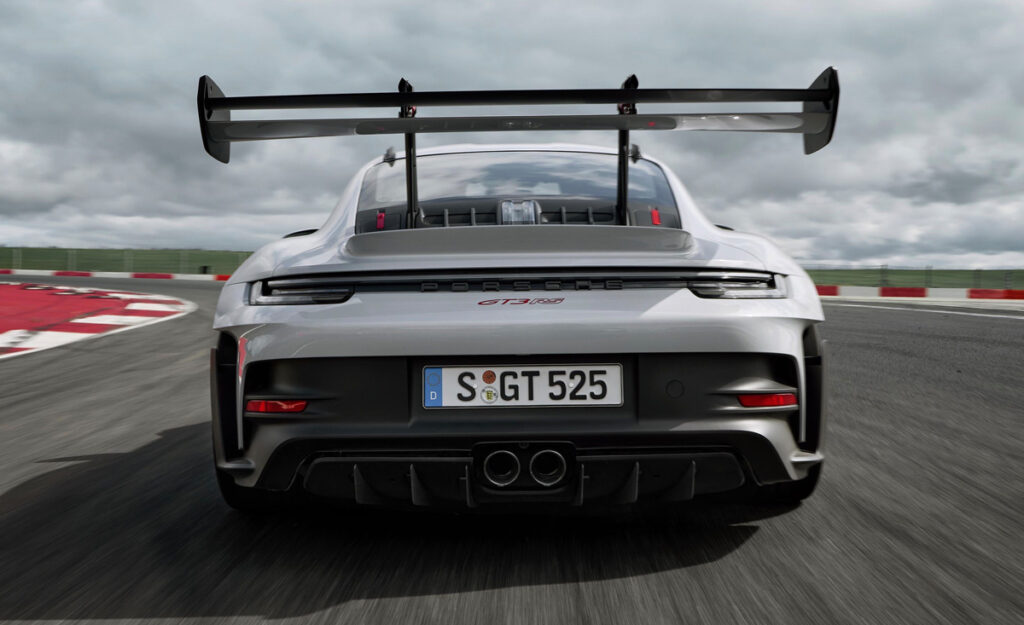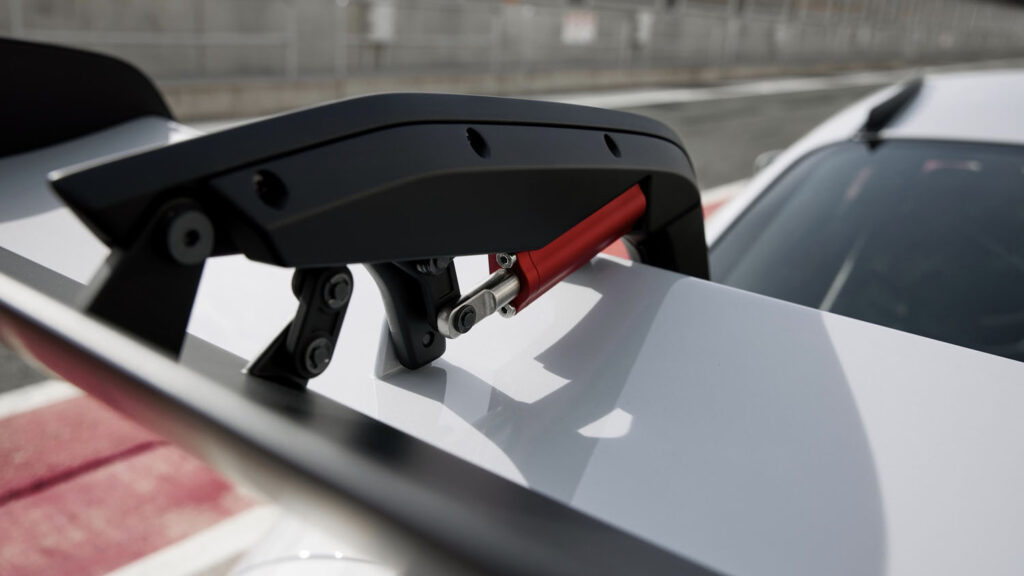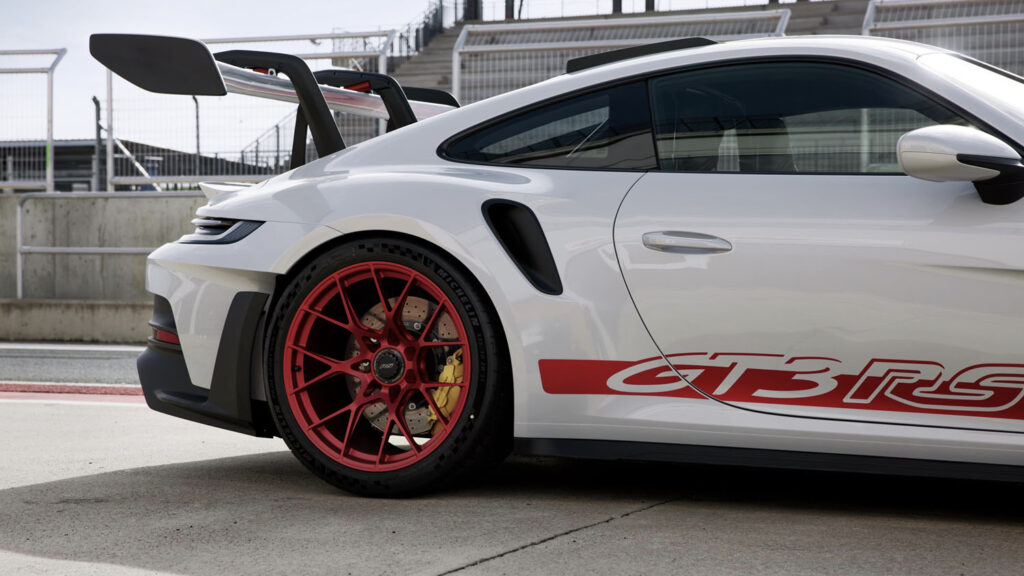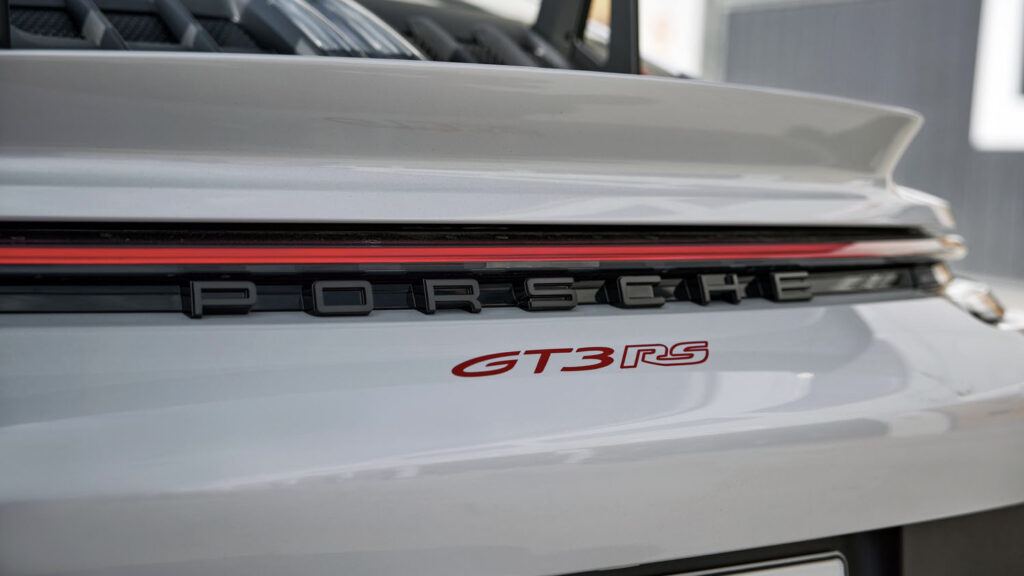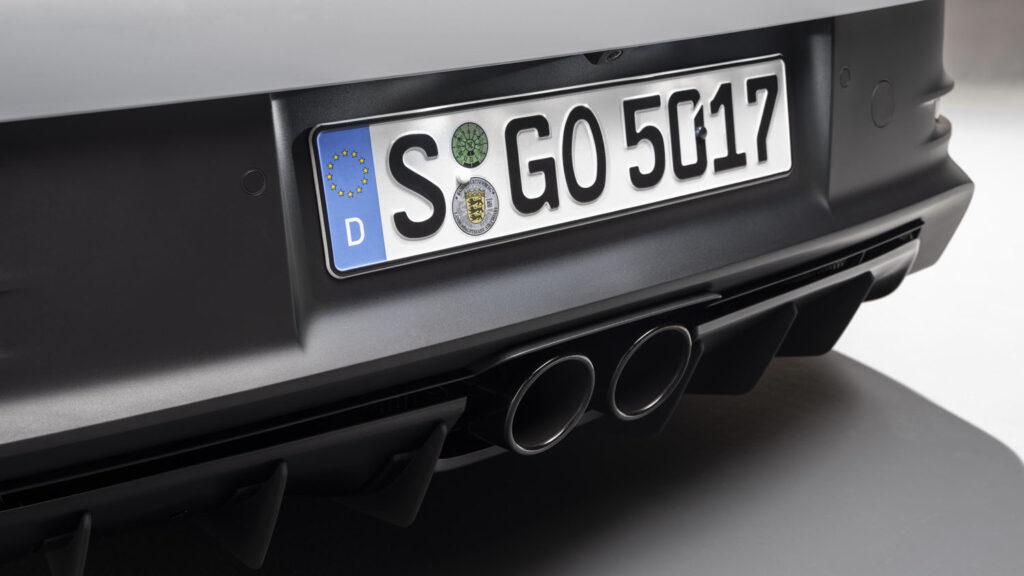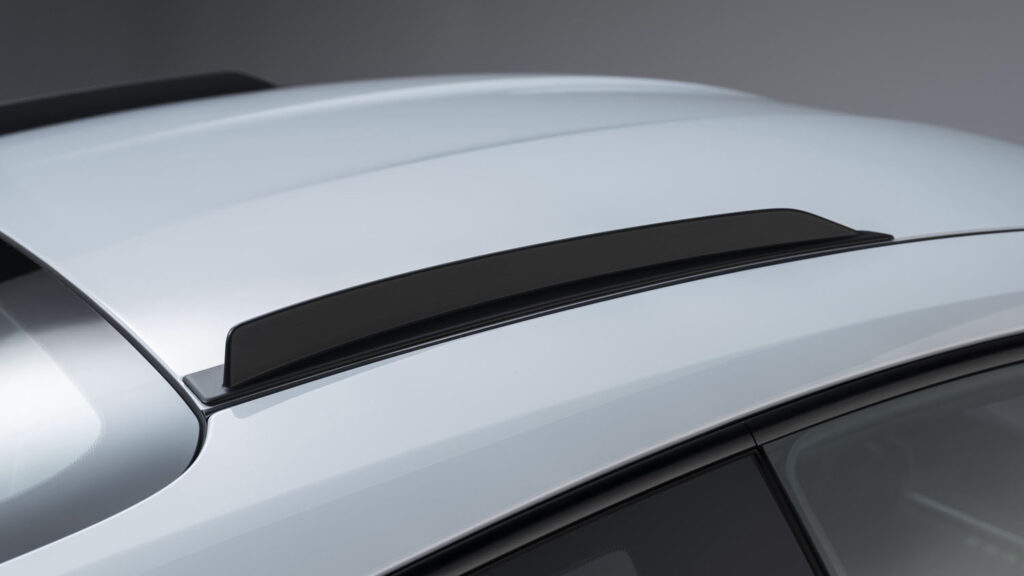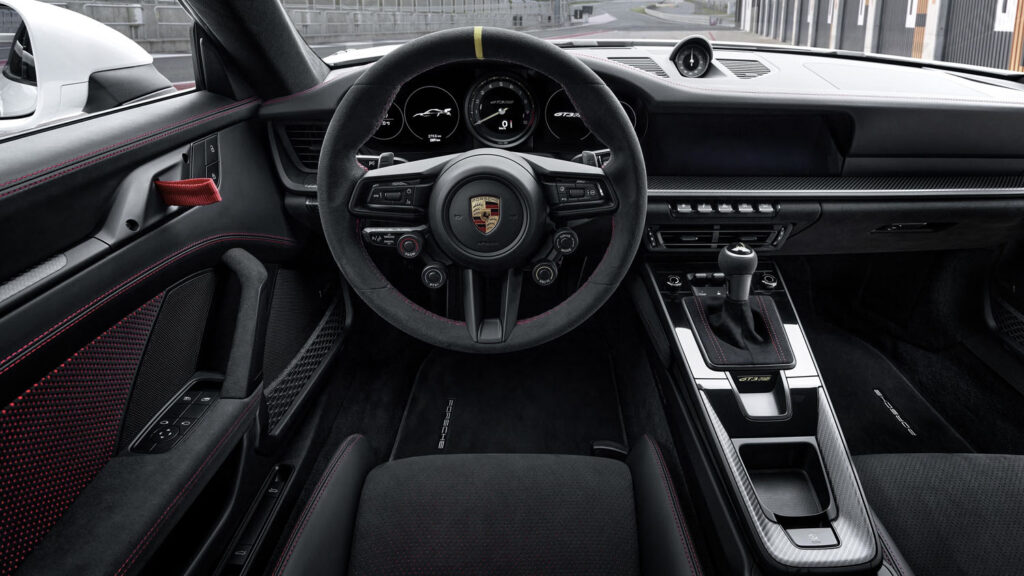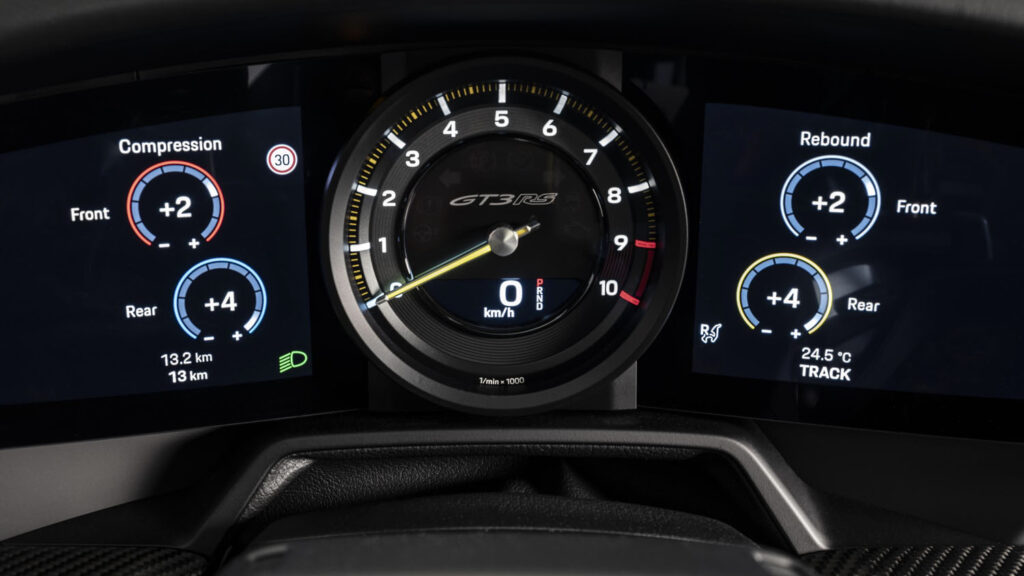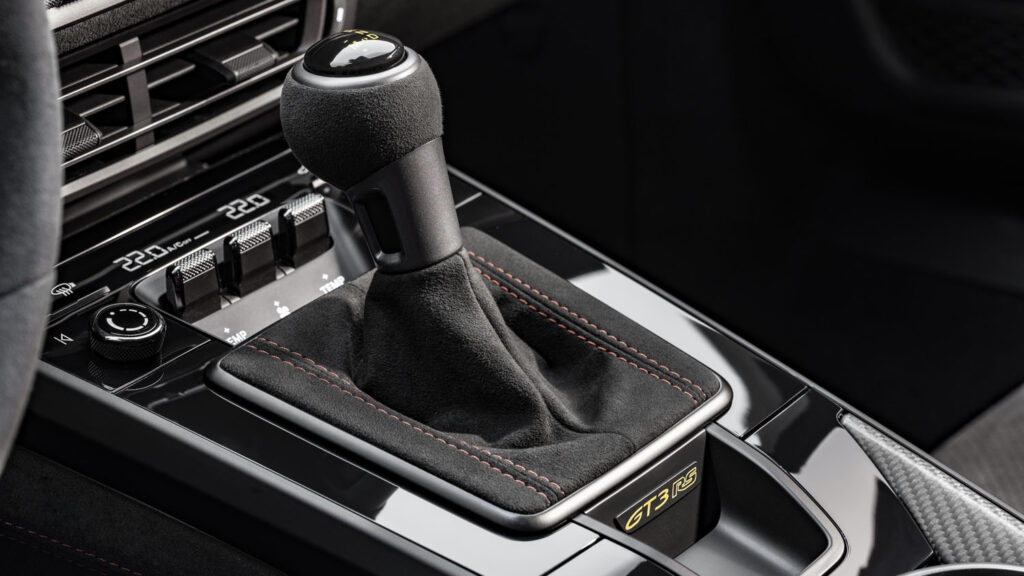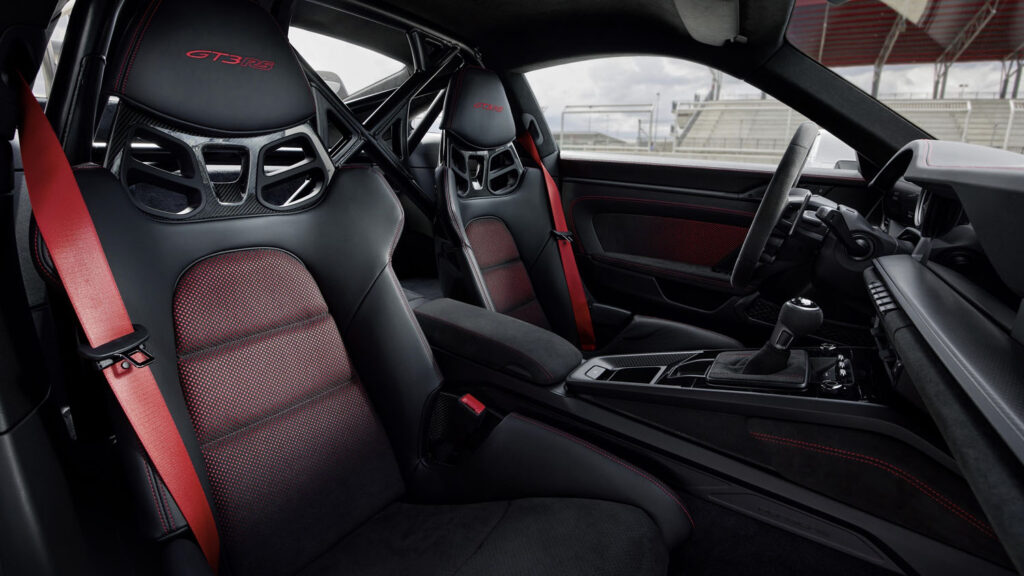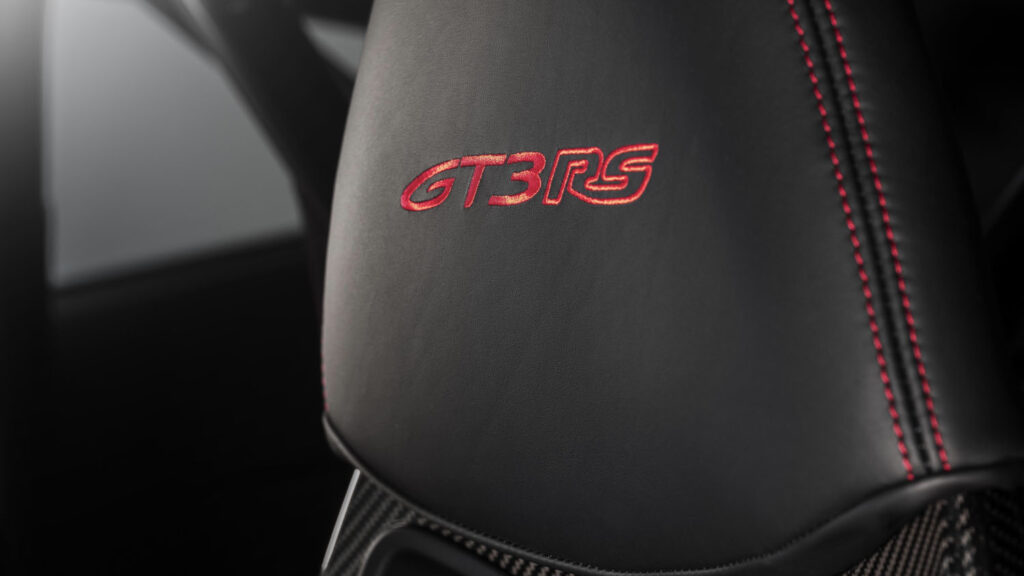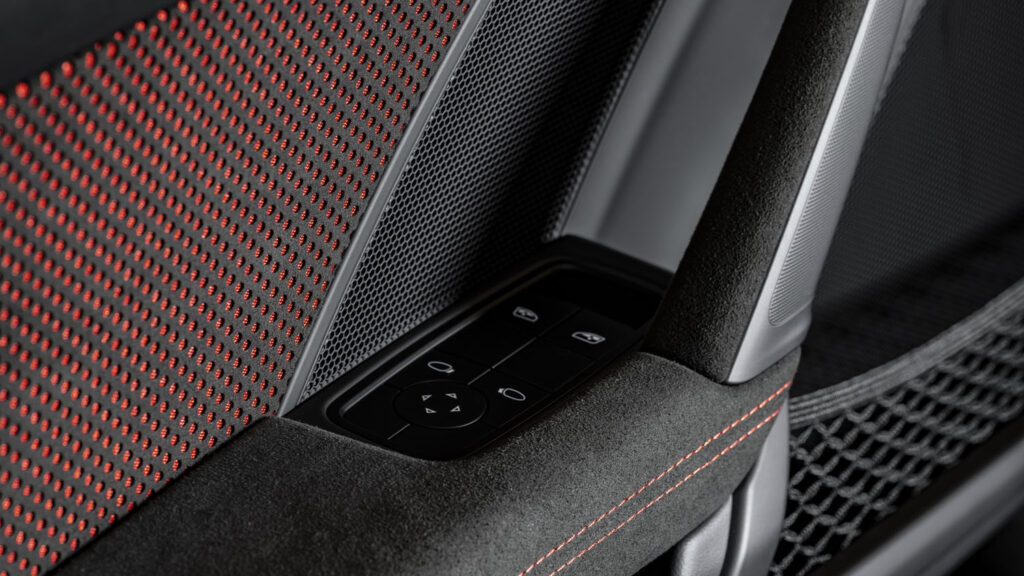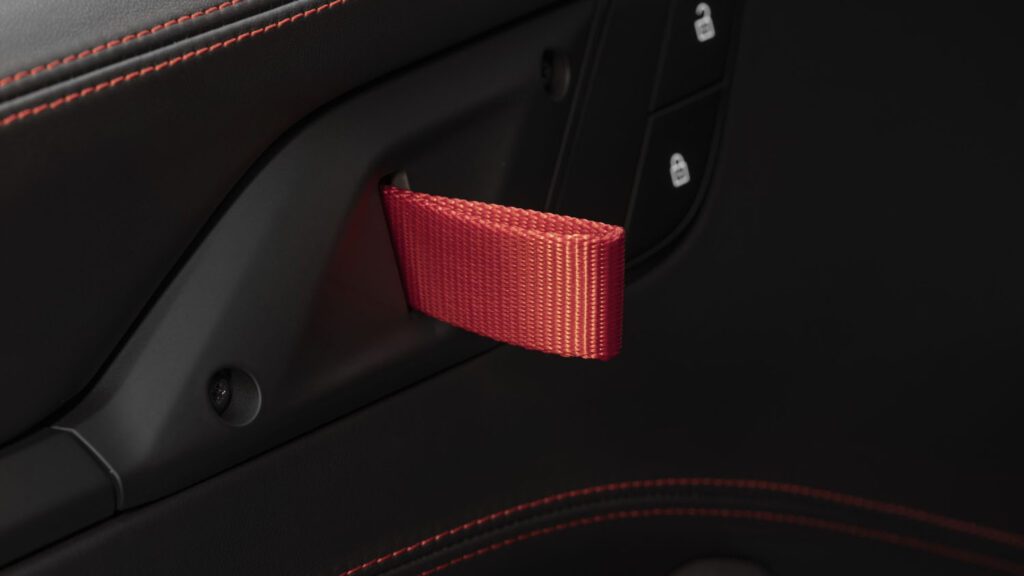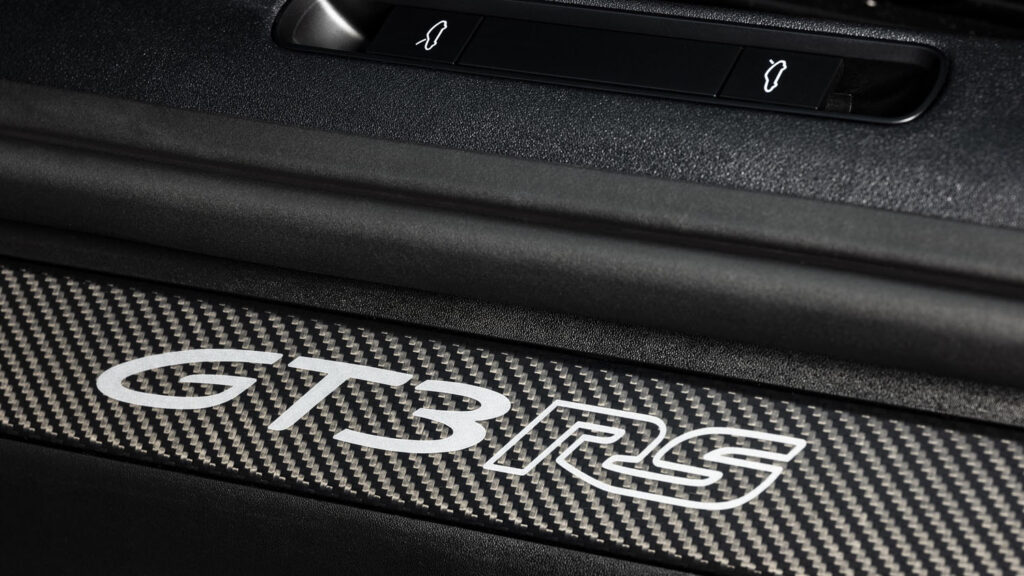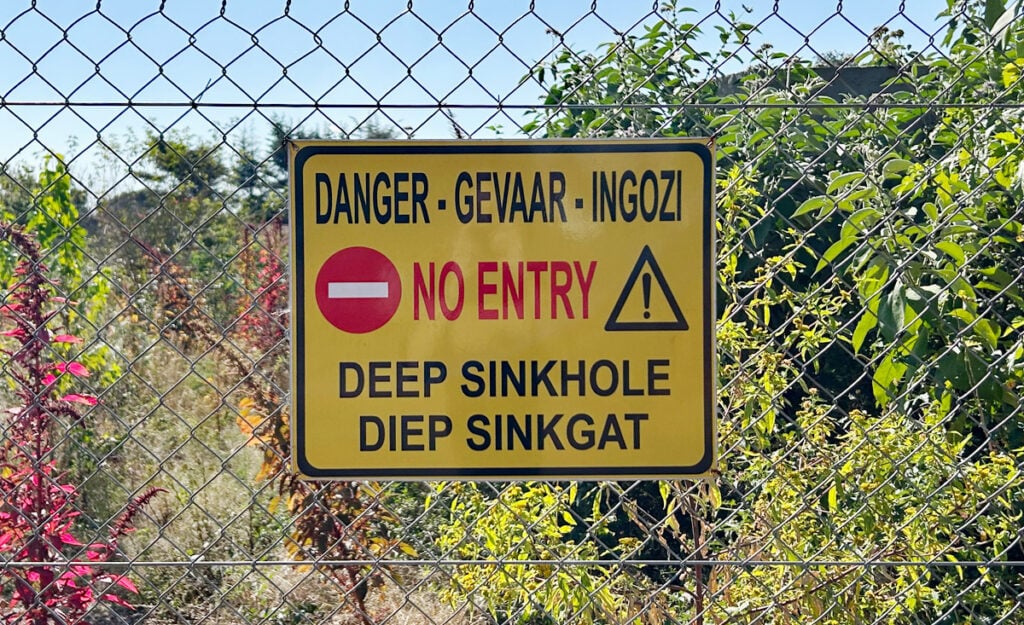New Porsche 911 GT3 RS revealed – A R4.1-million track monster

The new Porsche 911 GT3 RS has made its debut, packing an extensive list of improvements designed to maximize aerodynamic efficiency and performance.
The supercar will have a South African starting price of R4,153,000, and customer deliveries are expected to start early in 2023.
All-out aerodynamics
The most significant performance boost in the 992-generation 911 GT3 RS comes in the form of a new, large central radiator in the nose, an idea that took inspiration from the Le Mans-winning 911 RSR.
This radiator is positioned where the luggage compartment would usually be on other 911 models, freeing up space for new aerodynamic elements integrated into the sides of the car, and continuously adjustable wings at the front.
Combined with a two-part hydraulically-adjustable rear wing, the new aerodynamic measures provide a total of 409kg of downforce when traveling at 200km/h – three times as much as the current GT3.
This downforce can reach upwards of 860kg when the vehicle is taken up to speeds in excess of 285km/h, said its engineers.
A drag reduction system (DRS) has also been fitted into this track-focused GT3, a first for a production model Porsche, allowing the wings to be flattened with the push of a button which should provide greater speed on straights.
Another first for a Porsche production car, the upper edge of the rear wing is now taller than the roof, and the front now sports a splitter instead of a spoiler.
A new set of side blades then direct air outwards from under the car, while fins on the roof guide air towards the rear for better cooling.
The front wings also ventilate the wheel arches by directing air through louvered openings, and inlets behind the front wheels help to reduce the dynamic pressure that builds in the wheel arch.
As a result of the new aerodynamic wheel arches, the double-wishbone front axle was redesigned to cope with extremely powerful airflow.
The front axle has been extended slightly to correspond with the 29mm larger tracks fitted to the new car and to ensure that downforce is applied evenly to both ends, the rear axle has been set lower than the front axle, and the springs on both ends have been modified accordingly.
The three driving modes offered by the RS – Normal, Sport, and Track – adjust the suspension individually, making separate changes to the response of the front and rear axles. The rear differential can even be tuned using rotary controls on the steering wheel.
Naturally-aspirated performance
The RS is equipped with a 4.0-litre, naturally-aspirated petrol engine paired with a seven-speed automatic transmission, offering fewer gear ratios than the base GT3.
The result is a power output of 386kW, which combined with a lightweight body of just 1,450kg, means Porsche’s latest creation goes from 0-100km/h in 3.2 seconds and caps out at 296km/h.
In order to slow the 911 down, 408mm brake discs at the front and 380mm at the back are installed, and the airbrake and front and rear wings are designed to automatically kick in during emergency braking.
Keeping with the lightweight mentality inside, the GT3 RS sports black leather bucket seats and a carbon-weave interior.
A Clubsport package can also be had which adds a steel rollover bar, hand-held fire extinguisher, and six-point racing seatbelts.
The other optional package, the Weissach, sees a carbon-weave exterior finish and includes PDK paddle shifters with magnet technology to provide more precise pressure triggers. It also replaces the 21-inch alloys with magnesium forged wheels, which save another eight kilograms.
